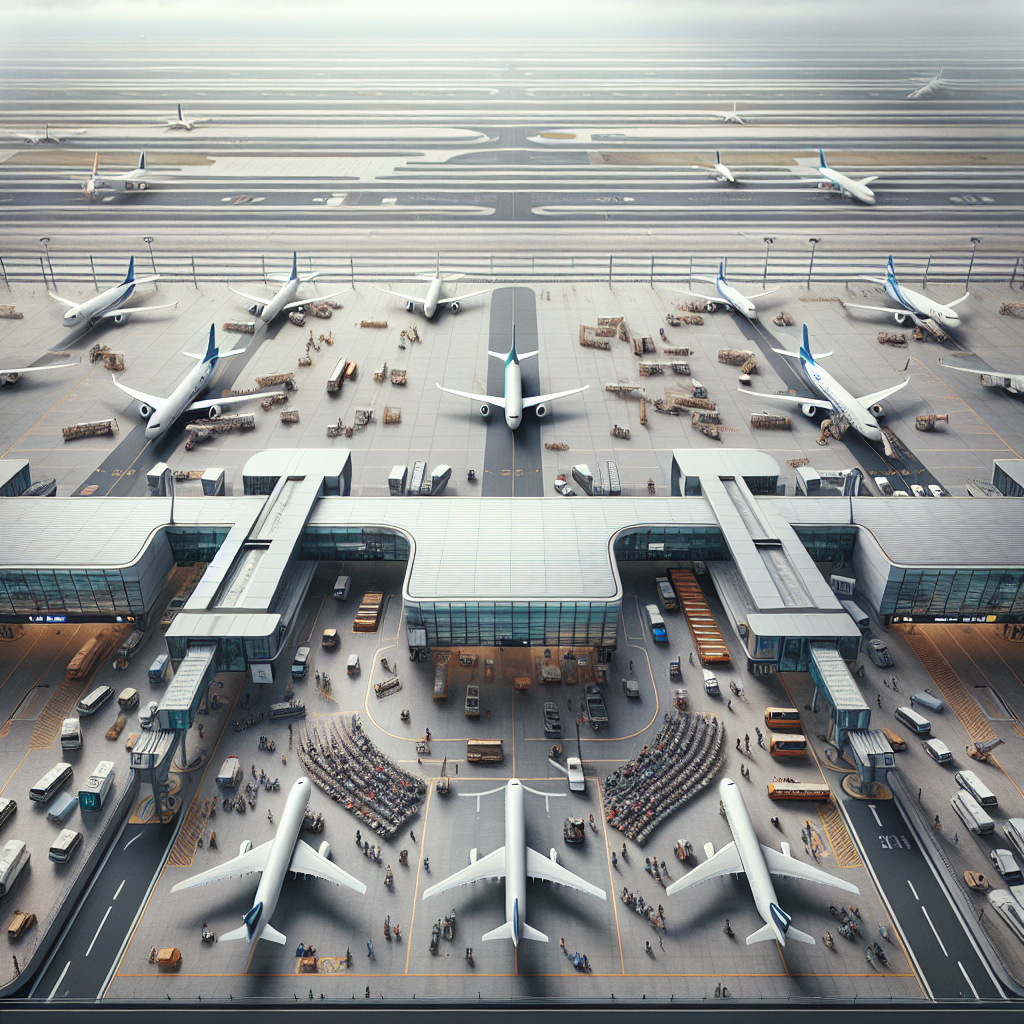
The Impact of Flight Groundings on Holiday Travel
As the festive season approaches, travelers across the United States gear up for what is expected to be a busy holiday travel period. However, this year started with a hiccup as American Airlines experienced a brief nationwide grounding of its flights due to a technical issue. This situation, amidst the busy travel season and impending winter weather, posed significant challenges for those planning to fly or drive.
Technical Glitch Causes Nationwide Ground Stop
On December 24, 2024, American Airlines flights nationwide faced unexpected delays when a technical glitch with a vendor technology in its flight operating system (FOS) led to a temporary grounding. The Federal Aviation Administration (FAA) ordered a national ground stop at American’s request, preventing any of its planes from taking off.
- The problem originated from a vendor-related issue with American’s flight operating system that affected operations like dispatch, flight planning, and passenger boarding.
- Dennis Tajer from the Allied Pilots Association highlighted that while individual components of FOS have faced issues before, a systemwide outage is a rare occurrence.
Although the ground stop was lifted within an hour, significant delays had already affected American’s major hubs, with only 37% of flights departing on time, and 19 flights were outright cancelled according to Cirium, an aviation analytics firm.
Customer Experience and Reactions
Many travelers took to social media to express their frustration over the delays, which led to missed connections and disrupted plans.
- Some questioned whether American Airlines would delay flights to accommodate missed connections.
- Bobby Tighe, a real estate agent from Florida, described how the delays ruined his plans to attend a family Christmas Eve party in New York. He ended up changing his destination from Westchester to Newark, intending to rent a car to revive his travel plans the following day.
Despite assurances from the union that there were no reports of chaos beyond a normal heavy travel day, passengers shared stories of lack of assistance from airline personnel and exacerbated traveling difficulties.
Weather Woes and Travel Challenges
As if technical glitches were not enough, travelers also needed to contend with winter weather threats across the country.
- Heavy rainfall and snow were forecasted in the Pacific Northwest, while parts of the South faced showers and thunderstorms.
- Freezing rain complicated travel in the Mid-Atlantic region, with snow hitting New York, further affecting airport operations.
The combination of flight groundings and adverse weather posed significant challenges, especially given that the holiday travel period extends over several weeks. Unlike Thanksgiving, the longer period typically witnesses smaller peak days, but a single disruption can rapidly spiral into widespread challenges.
Previous Airline Disruptions
The aviation industry is no stranger to such disruptions. A significant precedent was set by Southwest Airlines in December 2022, when a winter storm caused a cascade of issues, stranding 2 million travelers. Similarly, Delta Air Lines faced a technical outage in July due to a software update failure.
These instances highlight how critical reliable operational systems and contingency planning are, especially during high-stakes travel periods like the holidays. With most flights near capacity, every flight delay or cancellation becomes exponentially more challenging to manage.
Regulatory Changes and Passenger Rights
This significant disruption also comes in the wake of new Transportation Department rules aimed at protecting air travelers’ rights:
- Airlines are now required to automatically offer cash refunds for cancelled or significantly delayed flights.
- While rebooking could be a practical solution during peak travel seasons, finding a last-minute seat can be costly.
An American Airlines spokesperson confirmed that the airline did not consider the day as a peak travel day, offering some buffer to manage unexpected delays.
Future Outlook Amidst Rising Travel Trend
The TSA expects to screen over 40 million passengers through January 2. Ongoing demand for air travel reflects broader trends where people prefer car travel for nearby destinations over holidays, according to AAA.
With bustling airports and expressed customer frustrations, the spotlight shines on airlines’ operational systems resilience and their capacity to handle future disruptions.
- Your choice of transport might affect your travel stress this holiday. While air travel sees upward trends, AAA reports that 90% of long-distance holiday travelers will be in cars.
- Although gasoline prices remain stable compared to the previous year, electric car owners are witnessing varied costs across states.
All these factors underscore the importance of preparedness, both by travelers who may face unforeseen delays, and airlines, which need to prioritize technical system robustness and customer service excellence.
If you’re planning to fly during the holiday season, we recommend checking flight statuses regularly, staying informed about potential weather disruptions, and understanding your rights as a passenger.
A Smooth Holiday Season Ahead
As travelers navigate through these challenges, airlines continuously aim to enhance service improvements, aiming for integrated operations to ensure smoother journeys.
The rebounding demand for travel, combined with necessary regulations and streamlined processes, could promise a more predictable and comfortable travel experience.
Source: https://www.postandcourier.com/aikenstandard/news/nation/heavy-travel-day-starts-with-brief-grounding-of-all-american-airlines-flights/article_4f0350f6-c2da-11ef-bcae-8f004acbec25.html

